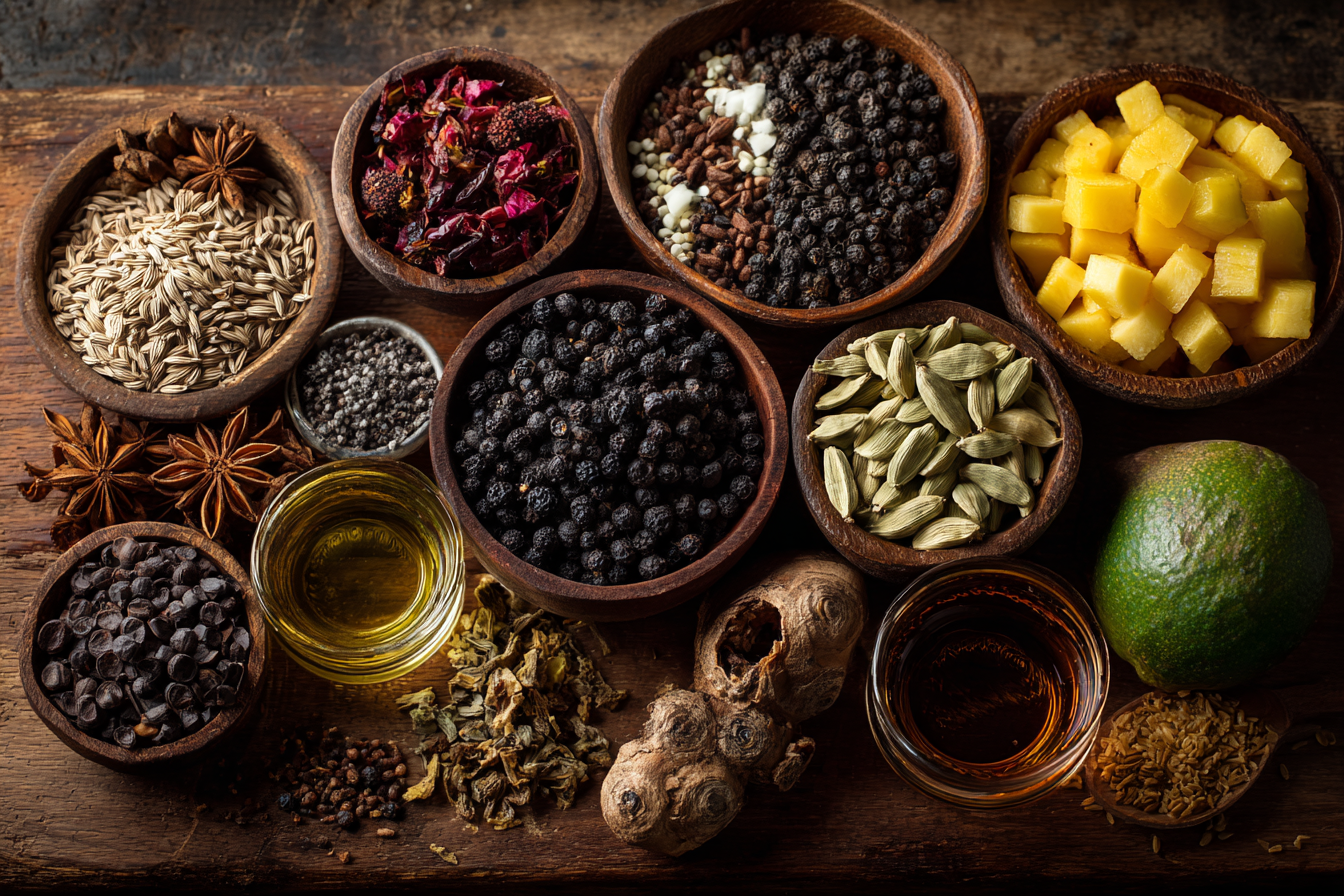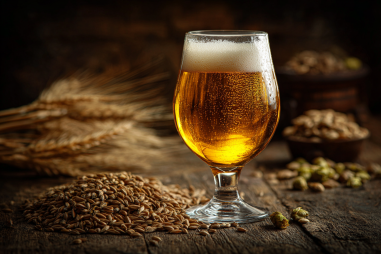The tropical stout is a delightful and distinctive beer style that brings together robust flavors typical of traditional stouts with unique tropical elements. This combination results in a rich, smooth brew that is both refreshing and complex—perfect for warmer climates but appreciated worldwide. At the heart of what makes a tropical stout so special are the carefully chosen ingredients that contribute to its character and appeal. From malt selections to adjuncts like exotic spices and fruits, every component plays a crucial role. Let’s explore the key ingredients in tropical stout brewing and see how they work together to craft the perfect blend.
Malt Varieties: The Backbone of Tropical Stout
Malt is the foundation of any stout, and in tropical stouts, it is no different. The malt bill creates the base color, body, and sweetness that distinguish a tropical stout from other beer styles. Brewers often blend several types of malt to achieve a balance between roastiness and malt complexity.
Common malts used in tropical stout brewing include:
- Pale malt: This is the base malt that provides fermentable sugars and a mild, sweet backbone.
- Chocolate malt: Imparts rich, dark chocolate notes and deep color.
- Black patent malt: Adds intense roasted flavors, bitterness, and a sharp cocoa edge.
- Crystal malt: Sharpens sweetness and adds caramel undertones, enhancing mouthfeel.
- Specialty malts like roasted barley: For additional roast and coffee-like bitterness.
The combination of these malts helps achieve the smooth, velvety mouthfeel and the complex roasted character beloved in tropical stouts.
The Role of Hops in Flavor and Aroma
While stouts are malt-forward, hops still play an important role in balancing the sweetness and adding complexity to the flavor profile. Tropical stouts usually employ hops sparingly but strategically. The bitterness from hops helps to cut through the malt sweetness and keeps the beer from becoming cloying.
Hop varieties chosen for tropical stouts often bring earthy, floral, or mild citrus aromas that complement rather than overpower the malt base. Common hops might include:
- East Kent Goldings: Offering subtle floral and earthy notes.
- Fuggle: Known for mild woodsy and earthy tones.
- Citra or Mosaic: Used in some modern takes for a touch of tropical fruitiness that pairs well with adjuncts.
Ultimately, the key is balance—using hops to enhance, not dominate, the flavor profile.
Adding Adjuncts: Tropical Spices and Fruits
What truly sets tropical stouts apart from traditional stouts are the adjuncts brewers add to infuse tropical character. These additional ingredients bring aromas and flavors evocative of warm climates and lush landscapes.
Popular adjuncts in tropical stout brewing include:
- Tropical spices: Cinnamon, nutmeg, clove, and allspice can add warmth and complexity.
- Fruits: Dried or fresh fruits like mango, passionfruit, pineapple, and bananas introduce fruity esters and subtle sweetness.
- Coconut and vanilla: A favorite adjunct pairing that adds creamy and sweet notes complementing the roasted malts.
- Cacao nibs: Sometimes added to boost the chocolate flavor and aroma.
The skillful use of these adjuncts creates a layered flavor experience, contributing bright, exotic nuances that celebrate the tropical theme.
Yeast Strains Optimized for Tropical Fermentation
Yeast selection is equally vital in tropical stout brewing. Since many tropical regions face higher ambient temperatures, yeast strains with good tolerance to warmer fermentation conditions are preferred. These strains help encourage clean fermentations while sometimes enhancing fruity esters that harmonize with the adjuncts.
Top yeast choices for tropical stouts often include:
- English ale yeast: Known for producing mild fruitiness and retaining malt character, common in traditional stouts.
- American ale yeast: Produces a cleaner fermentation profile with moderate ester production.
- Specialty yeast strains: Some brewers experiment with yeast strains that bring out tropical fruit esters or spice notes, tailored to the adjuncts used.
Maintaining proper fermentation temperature is crucial to avoid off-flavors, and selecting the right yeast strain helps ensure an optimal and predictable brew.
Water Chemistry Considerations
Water might be an overlooked ingredient, but it dramatically impacts beer flavor and chemistry. In tropical stout brewing, water chemistry is adjusted carefully to complement malt sweetness and enhance roastiness.
Key considerations include:
- Hardness levels: Increasing calcium content helps with enzyme activity during mash and improves yeast health.
- Sulfate to chloride ratio: A lower sulfate-to-chloride ratio encourages a fuller, softer mouthfeel, ideal for stouts.
- pH balance: Proper mash and fermentation pH optimize flavor extraction and yeast performance.
Whether using local water sources or purified water, brewers often tweak mineral content to perfect the beer’s taste profile.
Overcoming Ingredient Sourcing Challenges in Tropical Regions
Brewing authentic tropical stouts in tropical locations comes with unique challenges in ingredient availability. Certain specialty malts, noble hops, or high-quality yeast strains may be difficult or costly to source locally.
Many brewers address this by:
- Forming partnerships: Collaborating with suppliers to import specific malt varieties or hops.
- Growing local ingredients: Experimenting with cultivating local hops or using regionally grown cereal grains.
- Using indigenous adjuncts: Incorporating locally available spices, fruits, and botanicals to add a distinctive regional flair.
By integrating local flavors, brewers not only overcome supply constraints but also create truly unique interpretations of the tropical stout style.
Innovations in Ingredients to Enhance Flavor
As craft brewing continues to evolve, tropical stout brewers experiment with new and innovative ingredients to push flavor boundaries. Some exciting innovations include:
- Exotic wood aging: Using barrels or chips from tropical hardwoods to impart subtle tannins and unique aromas.
- Fermentation with wild or mixed cultures: Introducing funky, complex flavors reminiscent of tropical terroir.
- Infusion of unconventional fruits and botanicals: Adding rare tropical plants such as soursop or hibiscus for vibrant color and tartness.
- Enzyme treatments: To release more complex sugars and fruit esters from adjuncts.
These experiments continually redefine the possibilities for tropical stout brewing, delighting drinkers with novel sensory experiences.
Crafting Your Signature Tropical Stout
Creating the perfect tropical stout recipe requires balancing traditional stout characteristics with the vibrant nuances of tropical ingredients. Starting with a solid malt foundation and clean yeast fermentation, brewers layer in complementary hops and carefully selected adjuncts tailored to the desired aroma and flavor profile.
Here are some tips for brewers looking to craft their own tropical stout:
- Begin with a moderate roast malt profile to provide rich chocolate and coffee notes without overwhelming the palate.
- Choose hops sparingly to complement malt sweetness without overshadowing tropical flavors.
- Experiment with a blend of tropical spices and fruits to find a harmonious balance.
- Control fermentation temperature and select yeast strains suitable for warmer climates.
- Pay close attention to water chemistry to support mash efficiency and flavor clarity.
- Don’t hesitate to innovate by incorporating local ingredients or novel techniques that reflect your brewery’s unique style.
Developing the ideal tropical stout may take several iterations, but the result is a richly satisfying brew that captures the spirit of tropical brewing craftsmanship.
In the end, tropical stout brewing is a celebration of both tradition and innovation. By carefully selecting and combining the right ingredients—from malts and hops to yeast strains and adjuncts—brewers can create flavorful, well-balanced stouts that resonate with tropical climates and palettes. Whether enjoyed under the sun or as a comforting treat, the tropical stout’s layered depth and intriguing aromas make it a truly special beer style.







